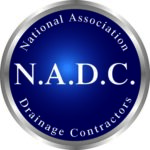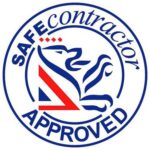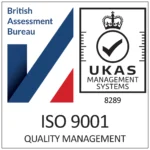We’re proud to serve customers throughout Cumbria and beyond, including:
Sewage Pump Stations in Cumbria
In gravity-fed systems, wastewater flows naturally downhill. But when terrain, layout, or regulatory needs demand lifting wastewater, sewage pump stations (also called pumping stations or lift stations) become essential. At Unblock Cumbria, we design, install, maintain and repair sewage pump stations throughout Cumbria and the Scottish Borders, ensuring your system moves waste reliably and safely over changes in elevation or distance.
Whether for a single property, a cluster of buildings, a rural development, or an industrial site, we supply pump station solutions tailored to your flow volumes, site constraints, and environmental permissions.
Our Services
-
Custom design & hydraulic modelling to size pumps, wet wells, and control systems
-
Pump station installation — wet wells, duty and standby pumps, pipework, and controls
-
Retrofit & upgrade work on existing stations to improve capacity, reliability or energy efficiency
-
Pump servicing & maintenance — cleaning, motor tests, seals, and control diagnostics
-
Emergency repair & replacement — prompt recovery when pumps fail
-
Telemetry & remote monitoring — alarms, SCADA integration, remote status checks
-
Inspection, calibration & performance verification
-
Compliance design — ventilation, odour control, access, safety features
We integrate station components carefully—wet well, pumps, float switches, pipework, control kiosk—to deliver dependable operation that matches your system’s demands.
Why It’s Important
-
Overcome site elevation challenges — lift effluent from low-lying buildings to mains or treatment levels
-
Reduce excavation and trenching — simpler than regrading large land areas
-
Enable development on sloping or uneven terrain
-
Provide redundancy — duty + standby pumps ensure continuous operation
-
Facilitate future expansion — modular designs grow with your needs
A well-engineered pump station can be the backbone of a robust wastewater network in challenging topography.
Why Choose Us?
-
Deep experience in rural Cumbria, local site constraints, and infrastructure
-
Certified design & installation teams — NADC, CHAS, SafeContractor
-
Complete lifecycle service: design → install → test → maintain → monitor
-
Clear, transparent quotations, documentation & evidence for compliance
-
Priority response for pump station faults
-
Remote monitoring and data integration to keep your system healthy
We don’t just supply pumps — we deliver complete, reliable station solutions engineered for long-term performance.
Areas We Cover
- Whitehaven
- Workington
- Carlisle
- Keswick
- Wigton
- Kendal
- Windermere
- Penrith
- Barrow-in-Furness
- and surrounding areas across the Scottish Borders.
If you’re unsure whether we cover your location, just give us a call — our friendly team will be happy to help.
Frequently asked questions
How is a sewage pump station sized?
It depends on projected flow, peak demand, elevation lift, pipe friction, and redundancy. We perform hydraulic modelling to select pump sizes, wet well capacity, and flow control parameters.
What is a duty / standby pump setup?
Most stations use two pumps: one “duty” (primary) pump and one “standby” (backup). If duty fails or is overloaded, standby takes over—ensuring continuous operation.
How often should pump stations be serviced?
Routine servicing is typically required every 6 to 12 months, though high-use or critical systems may need more frequent inspections and maintenance.
Can a pump station operate reliably during power outages?
Yes — through backup power systems such as generator sets or battery backup, ensuring continuity during outages when used in critical infrastructure.
Will odor or noise be a problem?
Proper design and venting, odor control systems, and sound insulation are integrated to minimise smell and noise. We also select pumps and foundations to reduce vibration.
What happens if the pump fails mid-operation?
With proper design, the station will trigger alarms and switch duty to standby. If both fail, you should contact us immediately — we provide emergency repair services to restore function quickly.
Get Your Free Quote
Need a reliable pump station designed, installed, or repaired? Call 01900 870 140 or complete our contact form. We’ll assess your site, recommend the best solution, and keep your wastewater flowing smoothly.





